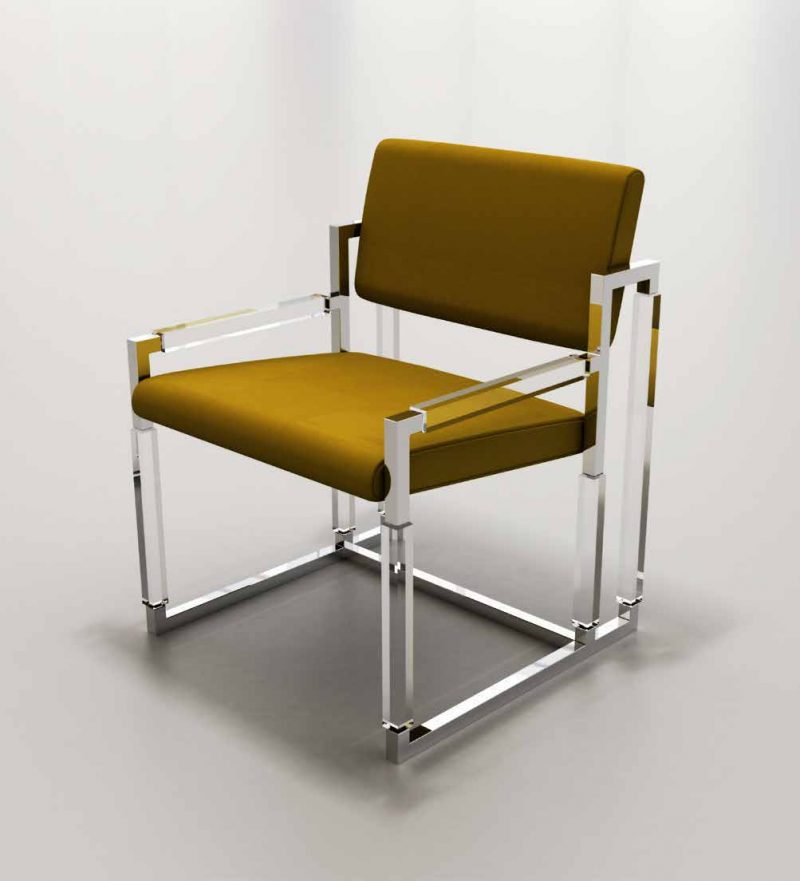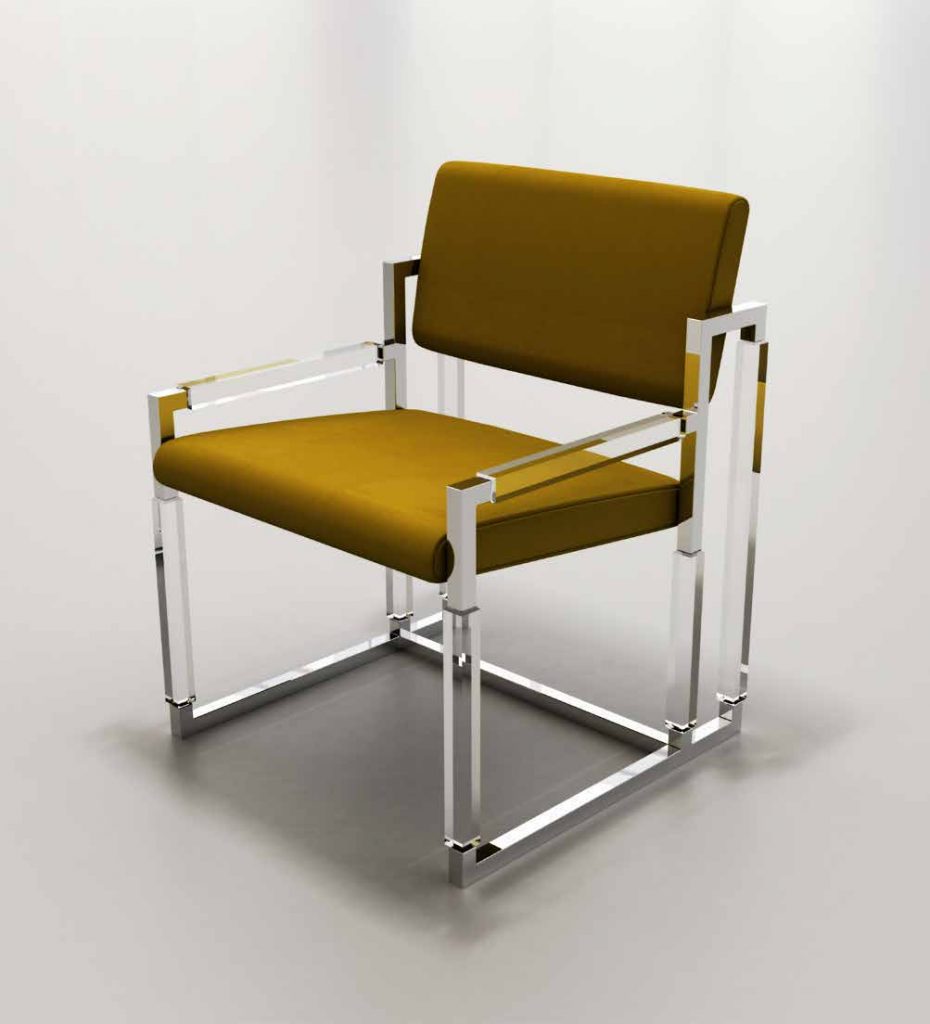
No material is more evocative of the 20th century than plastic. The development of acrylic plastic in 1928 created the opportunity for inventive design featuring this high gloss, lightweight, flexible synthetic material. Commercial adaptations of acrylic, such as Plexiglas, a German variation introduced in 1933, and Lucite, an American formula introduced in 1937, were a hit at the 1939 New York World’s Fair. Plastics flooded the market and infiltrated product and package design by the 1940s. During World War II, acrylics like Lucite and Plexiglas were essential to the production of parts for airplanes. The utilitarian aspects of Lucite and Plexiglas coupled with the material’s luxe high gloss transparency inspired a coterie of architects and designers to play with the relationship between form and function.
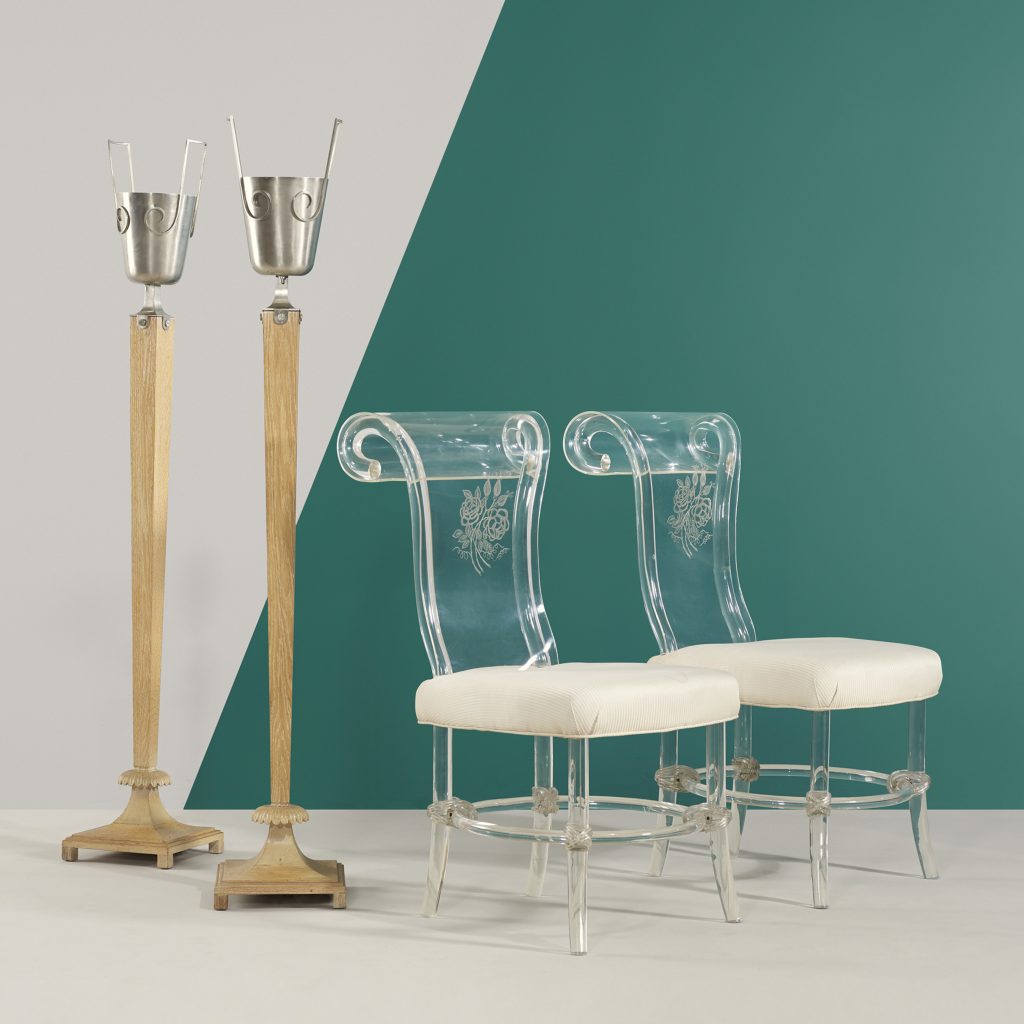
Photo courtesy of Wright Auctions.
Ladislas Medgyes
In the late 1930s, Helena Rubinstein, a cosmetics magnate, art collector, and design connoisseur, became taken with the material after approving Lucite packaging design by her close friend and collaborator Ladislas Medgyes for a new cosmetics line she developed. She soon ordered a custom set of furniture from Medgyes to be crafted in Lucite.
Medgyes presented Rubinstein with a lavish, light-up sleigh bed engraved with her signature roses made entirely of clear Lucite. The ambient light that emanated from the bed frame cast a low light perfect for reading in bed. Medgyes also created 8 dining chairs for Rubinstein, made of thick curvilinear Lucite. The back of the chair featured an etched rose and was crowned an elegant curl.
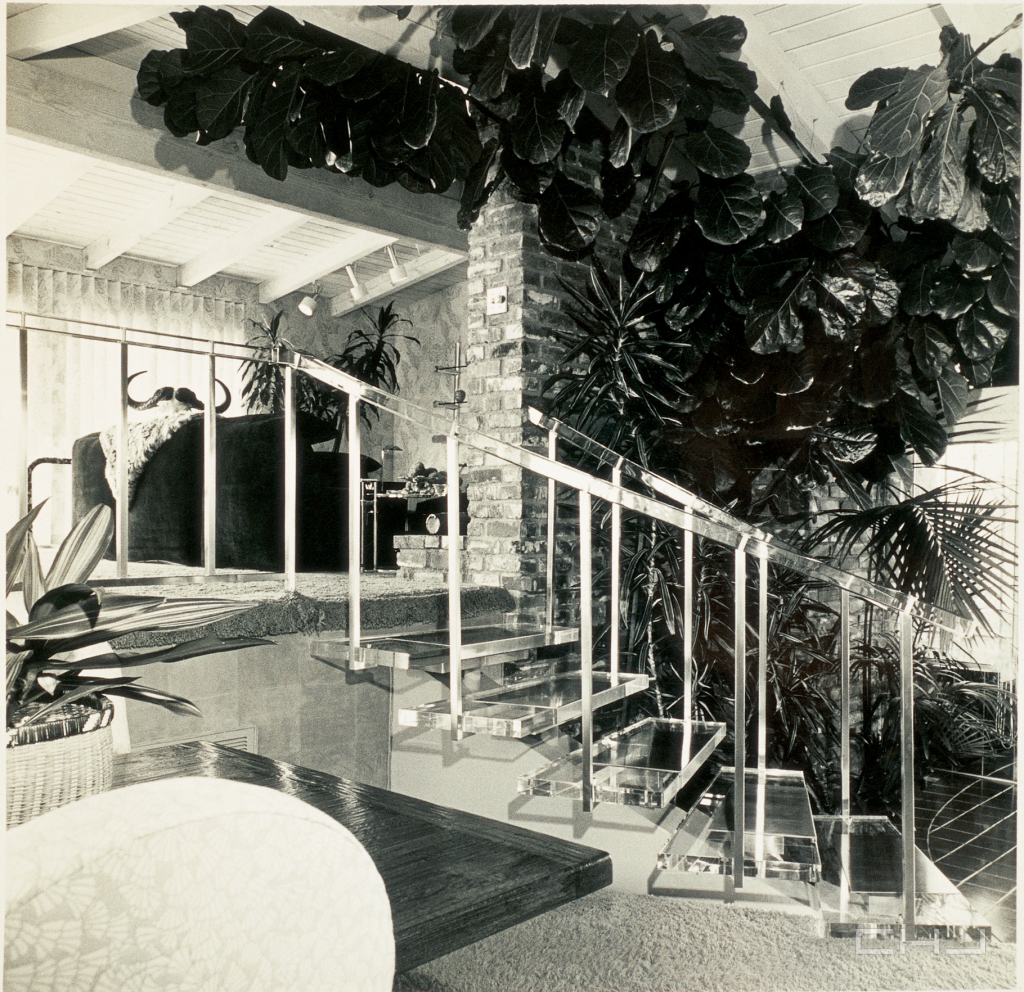
Charles Hollis Jones
The use of Lucite and Plexiglas in furniture design hit a fever pitch in the 1960s and 1970s. The shine and translucency of the material perfectly embodies the mid century futuristic aesthetic. The “King of Lucite” is Charles Hollis Jones, a furniture designer who worked with John Lautner and Arthur Elrod, among others. Jones’ lustrous acrylic furniture was first discovered by designer and architect Paul László, who began selling his furniture to Bullock’s Wilshire in 1961. From there he designed custom furniture for high profile clients like Lucille Ball, Frank Sinatra and Tennessee Williams. Some of his work for Lautner even ended up in the James Bond film Diamonds are Forever. While many designers worked in Lucite before Jones, he was one of the first to treat it as a singular material, not just an accent.

Paul Rudolph
Paul Rudolph, noted modern architect and forefather of the Brutalist movement, loved the industrial aspect of Plexiglas. The translucency of the material added a sense of danger Rudolph aimed for in his interiors. Many liken Paul Rudolph to Frank Lloyd Wright in that he had a holistic approach to design which included the development of custom furniture for each project.
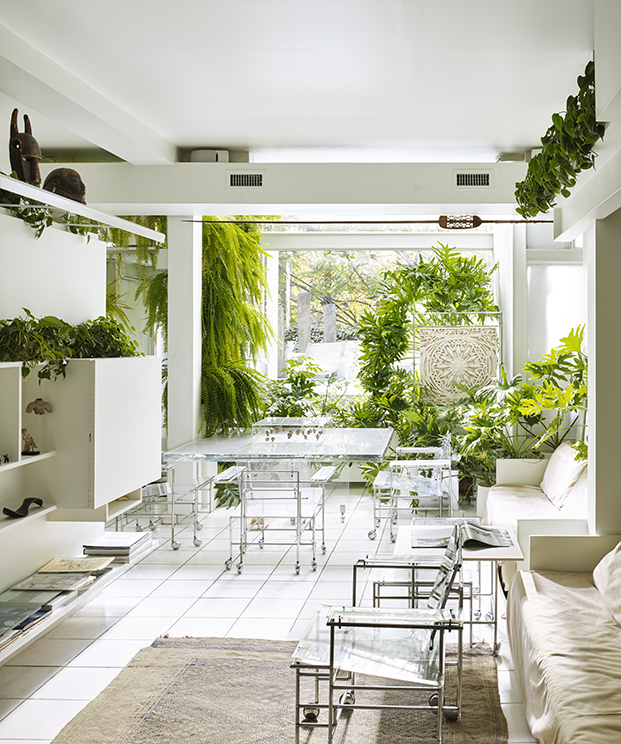
Rudolph used his own apartment at 23 Beekman Place as a lab for new design ideas. In the 1970s he became fascinated with modular lighting kits composed of Plexiglas and steel tubing. Rudolph developed an angular interpretation of the Marcel Breuer’s 1927 Wassily Chair composed of entirely of modular Plexiglas and steel parts. The clear, angular chair subtly takes to the light and architecture of the space, allowing the industrial piece to be softened by surrounding textiles, art, and plants. Apart from his own home, Rudolph only used these chairs and coordinating Plexiglas tables in the duplex of the Modulightor building in Manhattan. Recently, the Paul Rudolph Heritage Foundation began producing the rolling Plexiglas lounge and dining chairs for public purchase.
“Plastic is in essence the stuff of alchemy,” said French philosopher Roland Barthes, “more than a substance, plastic is the very idea of its infinite transformation; as its everyday name indicates, it is ubiquity made visible.” The dynamic Lucite and Plexiglas designs of Ladislas Medgyes, Charles Hollis Jones, and Paul Rudolph transform with surrounding architecture.
To learn more on Paul Rudolph as a game-changing architect, read here.
Of course, don’t forget to follow us on Instagram, Facebook and Pinterest for more Atomic Ranch articles and ideas!

